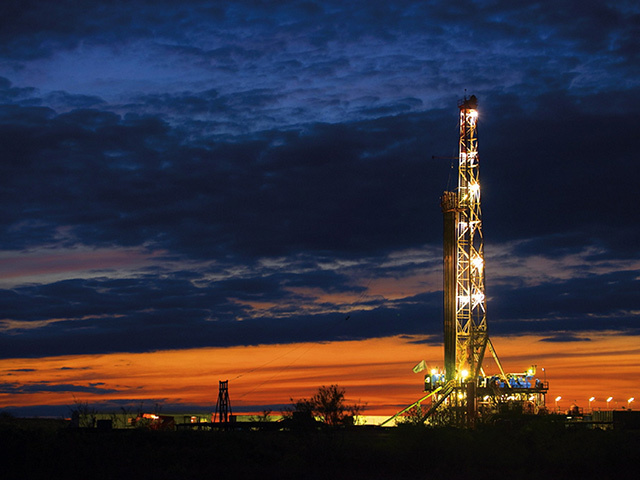
Every day there are headlines about the shale gas revolution that is engulfing the US and which the current UK Government hopes will sweep the UK.
Envious eyes are cast across the North Atlantic to an economy that is really starting to motor, fuelled by cheap energy and the prospect of self-sufficiency in oil and gas apparently not so far around the corner.
Indeed US imports of crude oil have dropped significantly over the past couple of years or so thanks to the oil bonus delivered from the shale gas bonanza.
One of the results of this is that the oil potential of North America’s huge shale plays has received a lot of attention from government in recent years. The mind-set is that, while gas is great, oil is better (It was ever thus).
However, according to the LA Times, the US Energy Information Administration has just slashed its “tight” oil reserves estimate for the strategically hugely important Monterey shale play in California by a whopping 96%.
The agency now says there are just 600million barrels of recoverable crude . . . roughly the reserves estimate for the UK North Sea’s Buzzard field. The EIA had previously said there were up to 13.7billion recoverable barrels.
According to the LA Times, EIA analyst John Staub has said that, from the information gathered so far, there is no evidence that oil extraction in this area will be productive using techniques like fracking.
“Our oil production estimates combined with a dearth of knowledge about geological differences among the oil fields led to erroneous predictions and estimates,” said Staub . . . apparently.
Moreover, it appears that the EIA will come clean this month.
The timing is rather interesting as, six months ago, an American organisation known as the Post Carbon Institute called the EIA’s initial estimate into question.
Its research revealed that, while the Monterey’s geology is indeed superficially similar to the thus far successful plays like the Bakken and Eagle Ford, it has characteristics that will make it more difficult to access the tight oil.
In a nutshell, what the PCI stated and which the EIA initially failed to take account of, is the geological complexity of the Monterey shales.
PCI lost no time in capitalising on the LA Times’ headline.
“The oil had always been a statistical fantasy. Left out of all the hoopla was the fact that the EIA’s estimate was little more than a back-of-the-envelope calculation,” it crowed in a statement.
It had been estimated that tapping the Monterey could generate 2.8million additional jobs in California alone by 2020.
The Sunshine State currently employs about 800,000 workers in the oil and gas industry and in fields such as hospitality that support energy workers, according to the American Petroleum Institute. At best the Monterey might now generate a few thousand more jobs.
It was in 2011 that the EIA commissioned consultants Intek to estimate how much oil might be recoverable from the Monterey Shale.
Intek generated a study . . . it has been claimed that it was based on oil company investor presentations . . . that said the Monterey might yield 15.4billion barrels. That equates to 64% of the total estimated tight oil reserves of the US Lower 48 States.
It was a University of Southern California study that then went on to cook up the jobs estimate.
The EIA came up with its initial 13.7billion barrels number by applying a modicum of caution to the Intek numbers.
And now the agency is slashing the estimate to a measly 600million barrels. That is not to say that the march of technology and much higher oil prices won’t transform the Monterey shale resource landscape and that it gives up a multi-billion barrels prize . . . in time.
Meanwhile, here in the UK, British Geological Survey with DECC has just issued a report about the hydrocarbons potential of shales beneath the western edge of the Home Counties through much of Sussex and Hampshire, that most quintessential of all English Tory heartlands.
And BGS is supposed to be reporting shortly on the Lothian shales where there is a 100-year history of shale oil extraction starting in the 1860s and where Dart Energy is currently being challenged for attempting to drill a coal-bed methane exploration probe.
The report just published covers the Weald Basin and estimates that in-place shale oil reserves are in the range 2.20-8.57billion barrels with a median estimate of 4.4billion. No significant gas resource is thought to be present.
So the Weald is very different to the massive Bowland Shale in the North of England where the gas resource is thought to be enormous.
Does that mean the idea of extracting shale oil as opposed to gas in this well-healed, leafy area where trespassers will be prosecuted signs abound will be regarded by residents as acceptable?
That’s a tough one. But why? Because there is a modest amount of conventional onshore oil production in Southern England. Companies have been unobtrusively pumping the “black gold” for many decades.
Can shale oil be extracted as neatly? That depends on a number of factors including the level of geological complexity and tightness, the nature of the wells attempted and the technologies applied.
Might that also include fracking? Of course.
Might BGS with DECC be proved wildly wrong like the US EIA is with the Monterey Shale if serious exploration starts?
Yes.
Recommended for you
